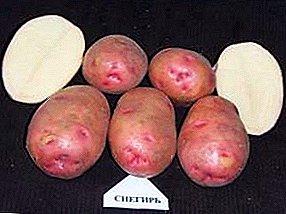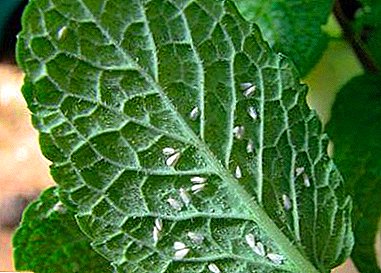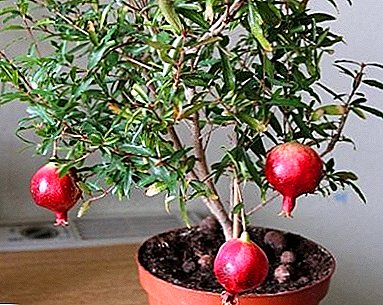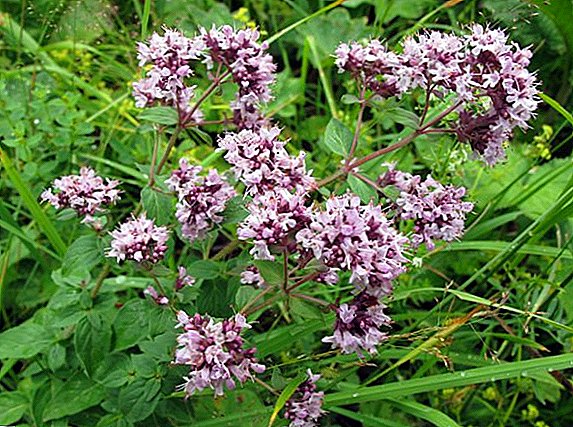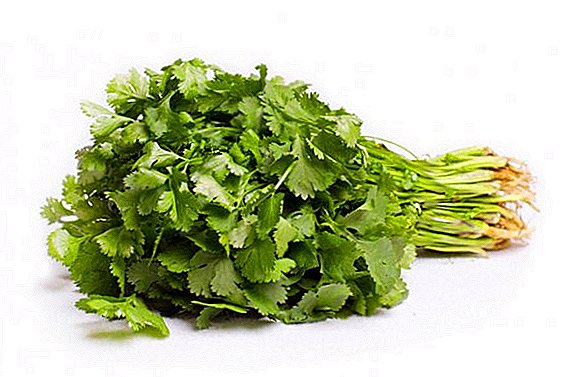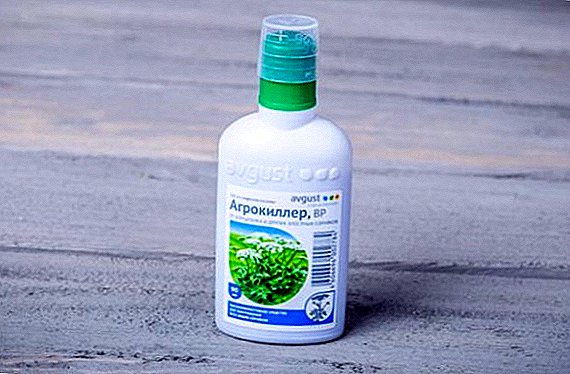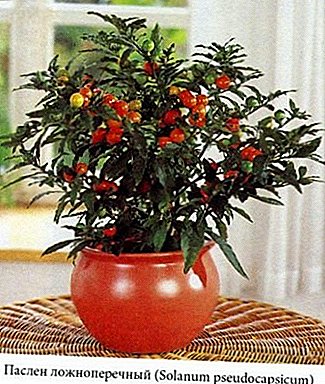
Nightshade - an evergreen shrub, belongs to the family of the nightshade. His close relatives are potatoes and tomatoes. The nightshade is widespread in the tropics and subtropics of the Eastern and Western hemispheres.
Nightshade, in Latin Solanum pseudocapsicum, originally from Madeira Island. Flower growers are called the Jerusalem cherry plant, the Coral Bush and the Tree of Love. Berries contain alkaloid solanine - poison. Therefore, the plant must be removed away from small children and animals.
Even despite the poison contained in the plant, on the island of Madeira there is a legend. If a married couple, wishing to have children, will eat one berry, then soon they will have a baby.
general description
 The shrub grows about 50 cm tall. On the highly branched shoots are the leaves of dark green color. Leaf shape - oval or lanceolate, slightly wavy. The leaves reach 10 cm in length, 1-2 cm in width.
The shrub grows about 50 cm tall. On the highly branched shoots are the leaves of dark green color. Leaf shape - oval or lanceolate, slightly wavy. The leaves reach 10 cm in length, 1-2 cm in width.
Small white flowers, about 1 cm in diameter, star shaped. The flowering period is almost year-round. Inflorescences are single.
In place of flowers, small fruits appear, about 3 cm in diameter. At first they have a green color. Then, in the process of maturation, change it to orange and rich red. In appearance, the fruit of the nightshade resembles a cherry. That is why Jerusalem cherry was called.
On the same plant, the flowers bloom at the same time and the fruits ripen. During the season a large number of seeds ripen. The berries taste bitter and contain toxic substances. If it enters the stomach, it causes poisoning.
A photo
You can visually familiarize yourself with the sunflowers on the photo:



Home care
Nightshade does not need special care, it is quite unpretentious.
Due to his appearance, he was fond of gardeners. It attracts attention with bright foliage, delicate flowers and bright berries.
Care after purchase
Jerusalem cherries, after the acquisition must provide a comfortable environment. Otherwise, in a stressful situation, she can lose leaves.
The place of adaptation should be well lit, but without direct sunlight. The plant is also provided abundant watering.
It may take 7-10 days to adapt to a new place. Then you can transplant it into a new pot. Typically, the soil in the transshipment store pots peat, not suitable for permanent growth, so it must be replaced.
Pruning
Every year in early spring shoots must be shortened to 1/3 of the length. This procedure is performed after ripening. In the autumn, pinching the tops of the shoots is done - this contributes to the formation of lateral shoots.
Watering
Nightshade in the spring and summer months needs abundant watering. In the autumn and winter watering is moderate.
 During the wintering period, watering should be performed no more than once a week. The earth mixture should not dry out.
During the wintering period, watering should be performed no more than once a week. The earth mixture should not dry out.
Coral bush likes high humidity. Therefore, throughout the year it is necessary to spray it with warm defended water.
To increase the humidity of the air, it is possible to place the plant pot on a pallet with wet pebbles. At low humidity flowering and fruiting is terminated.
Landing
For planting ready soil can be purchased in advance or make yourself.
To do this in a ratio of 2: 1: 1: 1 is mixed:
- turf soil
- leaf soil
- peat,
- sand.
After planting, the plant is placed in a warm room and it is provided with regular and abundant watering.
Transfer
Every spring, after pruning, a new nutrient soil is transplanted. Since during the flowering and ripening process the plant draws all the useful substances out of the soil, it should be fed after a period of rest.
At the bottom of the pot necessarily a layer of drainage is poured, not less than 3 cm. As a drainage, claydite and broken red brick have proven themselves to be good.
10-14 days after watering, fertilizer is applied to the soil, which is used to fertilize tomatoes. The dosage must be observed in accordance with the attached instructions. During the entire flowering period, top dressing is applied to the soil every 15-20 days.
Growing from seed
 For the germination of seeds used leaf soil, which is poured a layer of 10 cm in the seedling box.
For the germination of seeds used leaf soil, which is poured a layer of 10 cm in the seedling box.
Seeds spread out on the surface at a distance of 2-3 cm. Above, about 1-1.5 cm of sand is sprinkled on top.
The seedling box is covered with a film and placed in warm a room with a temperature of 21-23 degrees.
Periodically, the film should be raised and sprayed onto the surface with a spray bottle. In 10-14 days, shoots will appear. After the appearance of 2-4 leaflets dive into separate pots.
Breeding
After spring pruning of the plant, you can select the strongest cuttings and root them. To do this, they are placed in a container with water. You can immediately plant a cutting in a separate pot with the prepared soil and moisten the soil well.
Note! From above the stalk is covered with a glass jar. It will create a microclimate inside, and the rooting process will be faster.
Temperature
In the spring and summer months the temperature should be 19-25 degrees. In winter, you need to reduce the temperature in the room to 12-15 degrees.
In summer, it is advisable to take out pots with a flower on the balcony or in the garden. You need to ensure that it does not fall into direct sunlight. Also Nightshade saves from drafts.
Lighting
Regardless of the season, Nightshade needs good lighting. Optimal flower arrangement - windows that face east and west. Placing the pot on the south window you can not forget about shading.
Benefit and harm
Attention! Berries in no case be tried.
 False-cross nightshade berries contain alkaloid solaninewhich when ingested causes poisoning.
False-cross nightshade berries contain alkaloid solaninewhich when ingested causes poisoning.
Even despite the content of poisonous substances, nightshade juice in the countries of South Africa and in India is used in traditional medicine. It is used to treat boils, drowsiness and eliminate cutting pain.
Diseases and pests
Excess or lack of moisture adversely affects the plant. Leaves wither, flowering ceases. Development is also possible. root rot. Replanting and regular watering will help solve the problem.
Out of pest can be attacked whiteflies. It is located on the lower part of the leaf and sucks the cell sap; yellowish spots are formed on the leaves. After which the foliage twists, turns yellow and falls.
Another pest is spider mite. It can be seen from the thin cobweb that appears between the leaves. Mite affects not only the leaves, but also young shoots.
To control pests need to use insecticides according to the instructions. After 10-14 days it is necessary to re-process the plant.
A small shrub with rich green foliage and bright red berries will be a wonderful decoration of the house. But do not forget that the bright berries of the birchwood, which are very similar to cherries, can cause poisoning. So watch out for children and animals and enjoy its beauty!


